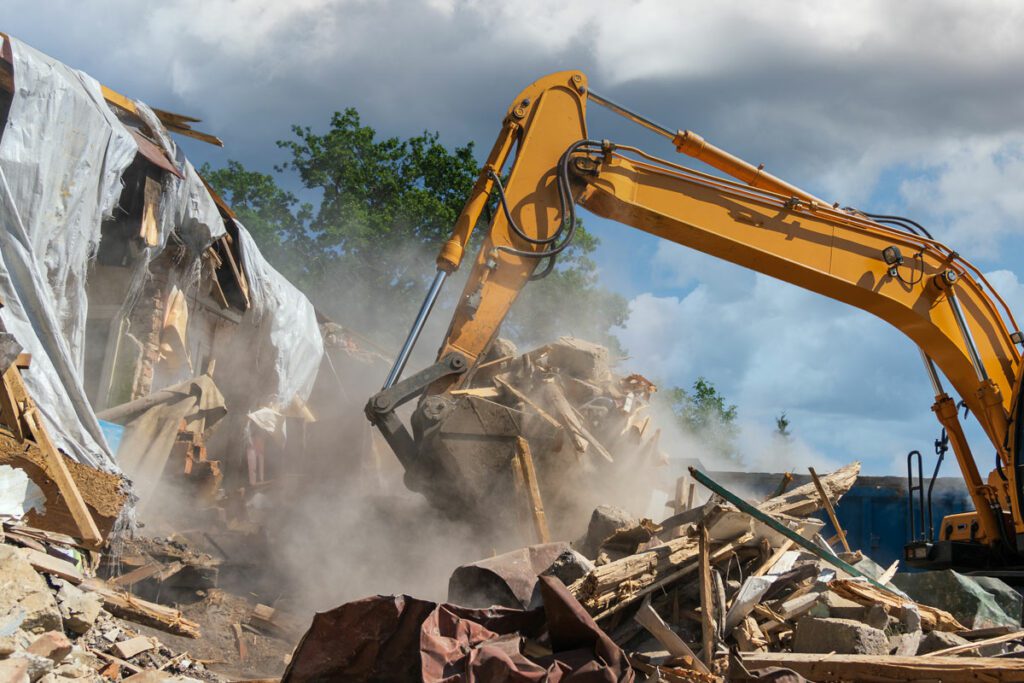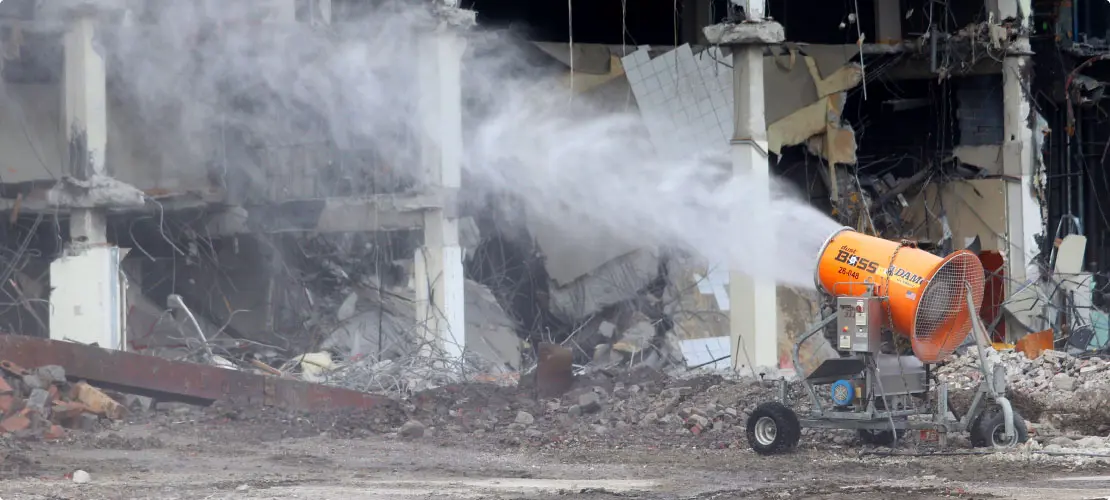
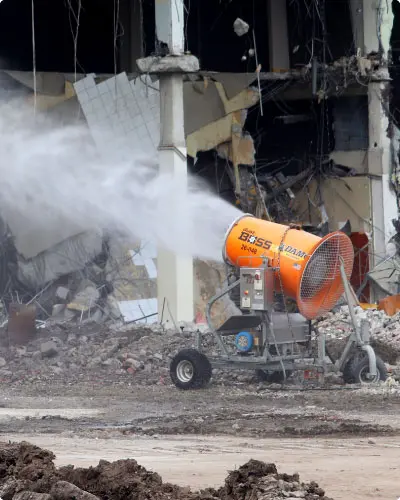
Justifying the purchase of any equipment should be accompanied by a real-world assessment of how it impacts the bottom line. If the goal is improving air quality from potentially harmful fugitive dust emissions in workplaces and communities, then investing in a mist cannon is an excellent consideration. The compliance and legal exposures are enough to drive a decision to seek a dust control solution, but it helps if the equipment actually enhances the bottom line.
Often, we get calls from potential customers asking questions like:
- Will mist cannons work on my site?
- What fugitive dust control do I need for my type of material?
- Are dust control cannons expensive to run and maintain?
The answer can be unique for each application. If we get enough inquiries in a region, we’ll hook up a DustBoss to our truck, drive it out and give some demonstrations right there on site. We love when we turn on the unit and hear the 25 HP fan ramp up and hum as it forces air through the barrel to the misting ring which fractures water into millions of tiny droplets that are propelled in a cone up to 100 meters (328 feet).

It’s a satisfying feeling watching the mist capture the dust right out of the air and drive it to the ground without excessive pooling or runoff.
This is enough to evoke a positive purchase decision, but below are some ways that using DustBoss Mist Cannons for fugitive dust control can enhance the bottom line of a bulk handler, port, or demolition contractor.
DIRECT COSTS VS. INDIRECT COSTS
Throughout this article, you’ll see the cost of operation associated with dust. Some of these costs are direct, while others are indirect. It’s easy to quantify the direct costs because they’re up-front expenditures: your operation is experiencing higher water bills, more labor costs, longer periods of downtime, etc.
Indirect costs can be more nuanced but are often 5-50 times costlier than the direct expenses. They’re expenditures that reach into the future as a result of no or inadequate dust control. Although these costs can be linked back to dust, the association is often lost to administration and a focus on new projects.
Successful operators do not dismiss dust as “the cost of doing business.” They often have a Dust Management Plan as part of their environmental assessment and take steps to control air quality both in the workplace and outside the site line. Mitigating these costs can mean a shorter ROI on equipment and greater growth for the company.
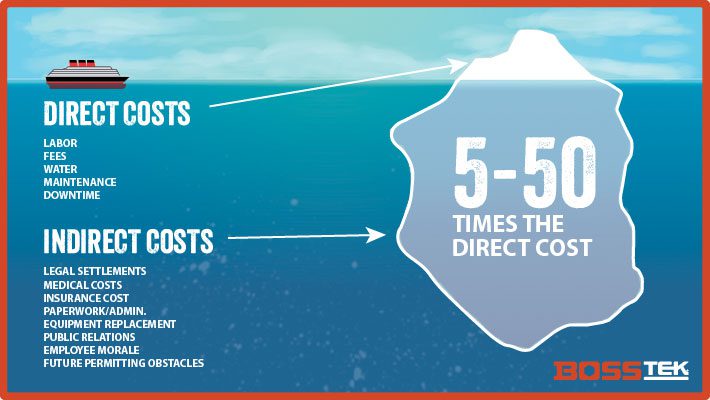
1) FEWER FINES & DOWNTIME FROM EPA PERMIT VIOLATIONS
Permits require operators to implement fugitive dust control to prevent emissions from leaving the site line.[1] Those who don’t adequately address air pollution can receive a stiff fine. In some extreme cases, frantic operators have contacted us because the inspector shut down operations until dust mitigation measures are taken. A single violation can take a toll on profits, and long periods of downtime could seriously affect annual production goals. Multiple violations can result in the loss, non-renewal, or more expensive/stringent future permits.
Dust can drift long distances, reducing the quality of life in communities downwind. Those with breathing issues such as asthma and chronic obstructive pulmonary disease (COPD) can be seriously affected. Based on the volume of dust, windy days can mean that residents need to shut their windows and halt outdoor activities, which becomes a serious issue. Complaints to the Environmental Protection Agency (EPA) or local officials can trigger inspections.
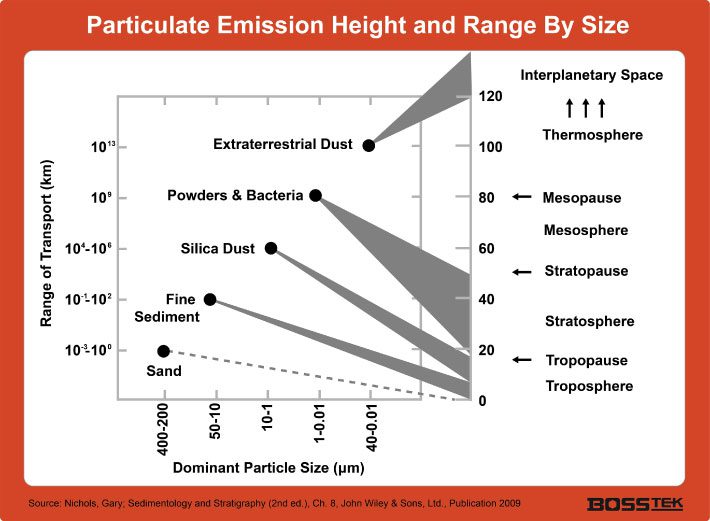
Violations from EPA inspectors merely require visual evidence such as greater amounts of dust collecting on foliage, snow, or hard surfaces downwind from a site. They can go as far as testing the air with gravimetric meters set up downwind from the site.
By preventing dust from leaving the site line, complaints will be minimized. The often-overloaded EPA inspectors will focus on other problem operators. Good community and government relations can also contribute to a faster and more cost-effective permitting process, with fewer stipulations.
READY FOR A QUOTE?
Talk to a dust control specialist and get a quick quote for your project.
2) FEWER OSHA VIOLATIONS AND WORKERS' COMPENSATION CLAIMS
Like the EPA regulations, excessive dust can become a workplace violation. The Occupational Safety and Health Administration (OSHA) takes dust seriously since it has been linked to chronic illnesses like silicosis and pneumoconiosis, mostly from Respirable Crystalline Silica (RCS).[2] This substance can be found in nearly every industrial activity from mining to bulk handling to demolition.
Inspections can happen at any time, but air quality testing is often triggered by staff complaints or a workers’ compensation claim. Several claims for the same ailment can result in higher insurance premiums, reduced coverage, or required corrective action.
OSHA inspectors often use a personal dust monitor worn by a trained worker to test particulate levels. Activities are covered by general employee exposure guidelines that determine permissible exposure limits (PEL). Dust volumes in an area are measured by weight in micrograms (µg) per cubic meter (m3). The OSHA guidelines limit employee exposure to a PEL of 50 μg/m3 as an 8-hour time-weighted average (TWA).
By controlling dust in the workplace, OSHA is satisfied and insurance companies can offer more affordable packages. Additionally, worker morale is higher which often correlates to increased productivity and lower turnover.

3) LESS MAINTENANCE AND LONGER EQUIPMENT LIFE
Heavy equipment like cranes, front loaders and crushers is made to endure punishing conditions through harsh weather and continuous use. But fugitive airborne dust can be invasive, quickly clogging air intake filters and fouling moving parts. Customers with indoor operations or stagnant air conditions have reported the need for downtime up to twice a day to perform maintenance and avoid excessive wear on machinery.
Large equipment is a significant capital investment that’s key to the bottom line of any bulk handling operation. Premature breakdowns and frequent maintenance -- along with labor expenses and unproductive operator work hours -- raise the cost of operation significantly.
4) LOWER WATER BILLS FOR BETTER RESULTS
The most effective way to suppress outdoor airborne dust is with water, but research has shown that the water droplets need to be roughly the same size as the airborne particulates for maximum effectiveness. Particulate Matter (PM) as large as 200 microns (µm) is able to remain airborne on normal ambient air currents and is no longer visible to the naked eye when the particle is 100µm or smaller (the cross section of a human hair). At the size of <PM10 (the regulated size threshold for airborne RCS), the dust can avoid the body’s natural defenses, penetrating deep into the lungs and causing/enflaming chronic symptoms.
Sprinklers and hoses produce droplets between 200µm and 1000µm compared to atomized mist, which is sized in the range of 15µm to 200µm. Droplet sizes greater than 200µm are only adequate for wetting surfaces, but don’t offer airborne dust suppression. This is due to the slipstream effect.
When dust mitigation efforts are limited to hoses and sprinklers, high pressure is needed to propel the water long enough distances to reach the working area (demolition zone, quarry work face, cargo ship hold, etc.). First, the pressure needs to be sufficient at the source. Then, the volume of the average hydrant is between 100 and 500 gpm, depending on the hose and nozzle size. The water first comes out of the nozzle in an intense – sometimes dangerous -- stream that, once it encounters ambient air currents, fractures into droplets. However, as mentioned above, the droplets are far too large to effectively capture airborne dust.
Mist cannons work differently. Operators can use a standard 1.5 inch hose connected to a water source. A 30 mesh, 595 micron filter system cleans the stream of most impurities and leads to a booster pump that raises the pressure before it enters the misting ring. Nucleating nozzles fracture the water into tiny droplets propelled by the powerful fan in the rear of the ducted barrel. Depending on the size of the cannon, the volume of water used can be as little as 4.9 gpm (18.5 lpm) from the DustBoss DB-30, with around 31,000 sq/ft (2,880 sq/m) of coverage, or as much as 39 gpm (147.6 lpm) from our DustBoss DB-100, which can cover roughly 337,000 sq/ft (31,000 sq/m) with an effective, dust-trapping mist.
The lower water usage by atomized mist suppression directly translates to cost savings and drastically reduced standing water, helping to make the workplace safer.

5) LOWER LABOR COSTS, INCREASED SAFETY, AND BETTER WASTEWATER CONTROL
A worker holding a hose or directing an industrial sprinkler requires labor hours, which raises the cost of operation. This is also the case for drivers operating a tanker truck spraying surface roads and work areas to reduce dust from wheeled traffic. With a DustBoss, workers can simply set up the machine and walk away.
The filtration system in the DustBoss clears impurities from the water, extending the maintenance intervals. When cleaning is required, the Quick Release Manifold allows quick removal and replacement so the misting ring can then be cleaned and easily made ready for the next replacement.
Mitigating wastewater runoff for hoses and sprinklers also takes man hours. With shifting operations using high volumes of water like quarries, demolition or ports, runoff needs to be directed to the proper impound or designated drainage area. Atomized mist is dispersed widely and settles gently, resulting in little or no runoff.
Pooling is another concern. This is an OSHA hazard that can make foot traffic dangerous but can also make maneuvering equipment difficult. Maintaining a smooth road surface to mitigate pooling takes labor. Like the runoff issue, although the ground is damp in the area treated by the DustBoss, there is significantly less pooling.
By automating dust control, operators can use a remote control to change settings (flow, angle, oscillation, etc.) in seconds. Taking the worker away from the working area and other moving equipment also improves safety. Reductions in the cost of labor for many aspects associated with dust control seriously improve the bottom line.
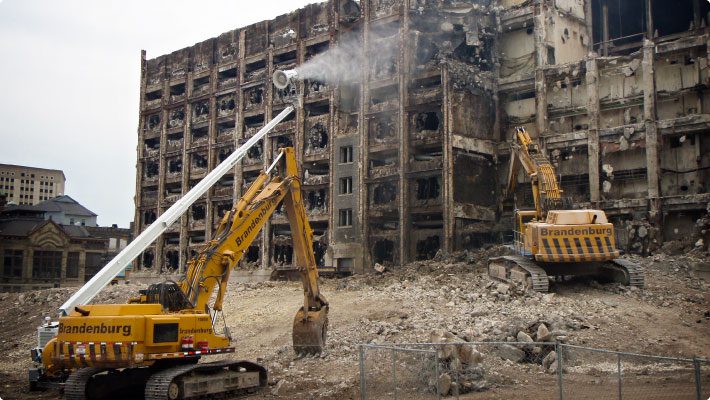
6) RETURN ON INVESTMENT (ROI)
The ROI on DustBoss Cannons has been reported by many customers to be faster than they estimated. Depending on the direct cost of operation, the simple payback is typically under 5 years and in some cases less than 2 years. The reduced labor costs of automated dust control, combined with low maintenance from rugged, field-proven equipment and smaller water bills, all help support the expense.
When all of the direct and indirect costs are calculated and the versatility is taken into account, operators find that a capital investment in a DustBoss is easily justified.
KEY SELLING POINT
DustBoss technology as a selling point for services is fairly unique to the construction/demolition industry. Several demolition contractors with DustBoss cannons in their equipment fleet have attested to the fact that their innovative approach to dust control has influenced the decision by general contractors to choose them over competitors.
When the community drives by these demolition sites, they see the efforts to suppress dust. The mere presence of a DustBoss is an excellent public relations tool. It also shows regulators that the operator is serious about air quality, community health and occupational safety.
THE BOTTOM LINE ON MIST CANNONS
Across North America, atomized mist cannons have been effectively used to drastically improve air quality and help operators reach their environmental goals. In addition, misting rings and misting heads at conveyor transfer points to treat bulk cargo reduce dust, particularly in cases when the bulk material is hydrophobic and might require a surfactant. DB-30 Injektor™ cannons ensure that precisely measured surfactant and odor additives are evenly distributed to suppress dust and odor in transfer stations, compost handling, etc.
To learn how your business can affordably control airborne dust emissions, reach out to one of our dust suppression experts. Contact BossTek today!
IMPLEMENT FUGITIVE DUST CONTROL WITH DUSTBOSS TODAY!
Receive a FREE quote and talk to a dust control specialist today to end fugitive emissions!
